Last time I talked about co-op games and the need to tweak the difficulty in the name of a better experience. I mentioned that inflating the total number of hit points can work, but it can lead to the trap of The Numbers Game, where your existing health and damage are scaled together, resulting in a constant game challenge that only shifts when you fall outside of what the game deems “fair”. This can work for RPG’s, but is troublesome when used on shooters.

This argument isn’t particularly constructive for the FPS designer, the poor soul who is scrambing for anything to keep things balanced and exciting in the wild wooly west of random online pick-up groups. We can’t really blame them for falling back on pure numbers when necessary (full disclosure: X-Men Legends was an unabashed example of the Numbers Game…). Solving this problem through other means is a tough one, but it is worthwhile to pursue avenues other than the venerable Bag of Hit Points.
Challenge Stage
When looking for ways to increase difficulty, game developers often wish the answer was as simple as adding more enemies to each encounter… “No problem! Double the players equals twice the enemies! BAM!” Sadly, very few game technologies give developers the luxury of unlimited enemies onscreen… It’s a yoke that just about all of us constantly struggle with. Back in the sprite days of Doom and Heretic it wasn’t a big deal; those games had extra enemy spawns that were triggered at higher levels or during coop. In these days of high-fidelity characters, however, most technology still keeps the population somewhere in the single digits.
There are tricks to give a feeling of greater foe count… Placing additional enemy encounters in the “dead spots” between the “standard” encounters works, if you never overlap the encounters to keep the maximum enemy count low. It can be tricky to pull off but it can give the player a sense of a relentless onslaught, requiring him to manage ammo and health more carefully even though he never sees more than a few at a time. Unfortunately, by leveraging this method you can ravage any sense of pacing, leveling out those tension peaks and valleys into a steady drone, and changing the game in perhaps unintended ways.
Another population trick is to deliver more enemies to the battlefield through respawning. This allows enemies to repopulate places that were previously cleared out, denying players a safe retreat and keeping the pressure on. This approach can be reviled by players because it denies them a sense of “completion” within a level (it was a contentious feature in Soldier of Fortune, for example), but it can be used to great effect. My first experience with respawning as a gamer was Doom’s Nightmare mode, where all enemies regenerated after 1 minute or so. (Damn that was hard!) More recently it was embraced in Left 4 Dead, where zombies can pour out of just about any opening, inaccessible fences area, rooftop, etc. Careful use of this mechanic can help a game level feel as though it is packed with hundreds of foes, even if your tech can’t handle it (although L4D did a damn good job with the population too)…
Up to 11
In contrast with developers, a majority of gamers wish that higher difficulty was just a matter of making the enemies smarter… perhaps implying the existence of a Jules Verne-era dial with “IQ” scrawled on the side that can be cranked past 10. Unfortunately game AI is never so easy that you’ve got unused slack somewhere that you’re not using. Generally it’s not decision-making that challenges the AI programmer or designer, but rather environment response and navigation. Sure, humans can walk across an obstacle-ridden field without even thinking about it, but an AI that does this naturally requires tremendous work whether the difficulty level is baby-like or insane.
Even if the leap from floor-traversing mouth-breather to devious mastermind were easy, I’ve repeated many times that “smarter enemies” don’t always pave the way to “more fun” anyway. Aside from major boss-level fights, the opponents in many games don’t last long enough for you to really experience their brilliance… showing off would require for the player to see them, which means they’re probably already busy killing them. Sure, you could make the enemies tougher so that you might see their amazing kung-fu, but then you’re back to turning them into HP bags.
![]()
Some games emulate enemy “smarts” by simply increasing their shooting accuracy or giving them uncanny perception. Let me be clear, this is not fun. Most games with gun-toting enemies need them to be inaccurate at long ranges. If an enemy pops into a play space a long distance from the player, chances are the player is not aware of their presence immediately… a bit of warning is needed before he gets a bullet in the head. If an enemy’s accuracy is simply dialed up arbitrarily, the player suddenly starts taking significantly more damage from enemies a few pixels in size… you’ve turned the game into a walk through a room full of snipers. Statistically the enemies are just doing more damage to the player each second anyway… so that’s what you want, just crank the bullet damage and be done.
There are some better models out there for bullet inaccuracy that can help remedy the fun, but they are still aren’t used enough (that would be fun to talk about in another post).
Phases of Death
While technically it is a variation on adding health to opponents, but one way of amping difficulty is giving them additional damage states, each of which has to be “killed”. Examples of this are the humans that become “tentacle heads” when headshot in Resident Evil 4, or the aliens in Blacksite: Area 51, that can sever their torso after being “killed”, crawling after the player. These imply non-realistic opponents or a heavy art burden, but it can also be done by having the foe walk with a limp in phase 2, or switching weapons each phase.
This may sound familiar because it is the way that just about every classic boss encounter works… and for good reason. Bosses are “tough” and hence can soak up a lot more damage… without small player victories and new behaviors coming into play, defeating them would be a tiresome exercise in shoveling damage until it goes down (and many action games still use this model).
Cleverly-designed damage stages also have the advantage of not always being used. A 3-stage robot can skip stage 2 and 3 in easy difficulty, last for a second stage in later levels, and die only after all three in harder difficulties. Depending on how an enemy is designed, it might even be possible to regenerate them to a previous state if not killed in time for even more challenge.
A distant relative of the staged model is a mechanic where an enemy must be in a certain state to be killed. For example, a foe may have a “stunned” state which provides you with an opening to slice off their head. By this I don’t mean “Japanese boss-style” where every 15 seconds the monster opens up his eye-dome and can be hurt, but rather a system that gives the player the tools to introduce a vulnerable state. Another example is a robot who must be immobilized with an electric shock, before you step in to disable his control chip. Or a soft-bodied creature that must be frozen first and then shattered (similar to how the freeze-wrench combo works in Bioshock). Games like modern military shooters are more limited in this respect, but if you have the luxury to play with your enemy ecology (that is, their function and response to various stimuli), a large number of additional options open up to you. As above, you can scale difficulty by sprinkling in these new mechanics more aggressively later on (say, early robots don’t have an “overdrive chip”, but all of them do at higher difficulty).
Smarty(er)-Pants
Other tricks aside, there’s still a value in delivering a smarter enemy… or at least one the gamer will recognize as “smarter”. One example of that is to add some coordinated behaviors between multiple foes. A simple trigger that makes several enemies charge at once or synchronize multiple grenade tosses can add difficulty in a hurry. Throw in an audio cue to draw attention to it and suddenly the gamer has a newfound respect for your AI mojo, baby. More complicated relationships like an enemy that lays down covering fire while the other charges can be good also, but the more complex they get, the more likely they are to fail or get lost in the shuffle. Sure, it makes things harder, but look for ways that are going to make the player feel the added pressure.
Left 4 Dead in particular leveraged this synchronization through their “AI Director”. While not technically an issue of “smarts” (the zombies are, well, zombies) when the director decided that the experience needed a massive assault for added danger, the player knew that the game was turning on the heat. The perception of challenge is perhaps as important as the actual difficulty increase.
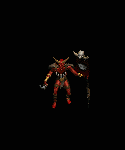
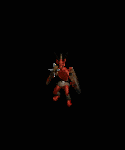 Adding enemies with interrelated behaviors is also a method to give a feeling that they are “conspiring against you”. A prime enemy that adds challenge to any group is the buffing opponent. The Shaman in Diablo II and the Arch-Vile in Doom II could resurrect fallen opponents, making the whole group for more deadly and interesting to fight. Other, more mild examples of this type of enemy are enemies that have an aura that heals or increases the strength of their nearby friends.
Adding enemies with interrelated behaviors is also a method to give a feeling that they are “conspiring against you”. A prime enemy that adds challenge to any group is the buffing opponent. The Shaman in Diablo II and the Arch-Vile in Doom II could resurrect fallen opponents, making the whole group for more deadly and interesting to fight. Other, more mild examples of this type of enemy are enemies that have an aura that heals or increases the strength of their nearby friends.
A player must completely change his tactics and adjust when fighting a group that has a buffing foes added. Even one can add considerable challenge, and multiples can be devastating. Beyond just spawning extra ones, their behaviors can be tweaked for difficulty by increasing the buffing effect, casting time, or the radius of their ability.
Looking closer, any type of environmental object that enemies can utilize can add challenge and an extra feeling of intelligence, no matter how simple. Enemy buffs could be provided by emplacements rather than spawned foes. The health stations in BioShock kept you from leaving your nearly-dead foe alone, because he might return fully charged. Emplaced totems such as those in World of Warcraft are similar.
Final Thoughts
Reflecting on what I’ve written above, I see that there is no “magic bullet” for scaling difficulty (although I hoped that writing about it might shake one loose). The techniques that must be used will certainly vary from game to game… My main suggestion is to look beyond the traditional D&D numerical “crutch” when faced with systems that need to scale. I understand why we do it: it’s not just our inner fanboy screaming to get out… numbers are a necessary part of our job and getting results. However, I love designs where the player doesn’t have to be steeped in numbers in order to succeed.
You might also come out of this thinking that I turn my nose up at RPG’s. On the contrary, it’s one of my favorite genres, and Diablo II is still my favorite game of all time.
Finally, I certainly mean no disrespect for what Resistance 2 has accomplished in its multiplayer mode. Along with Call of Duty 4, I think it has laid a foundation for great semi-persistent online experiences for shooters. What others might build upon these concepts in the future makes my mind reel.

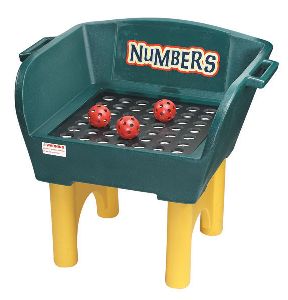 Somehow this is an acceptable practice in RPG’s… Those games are almost entirely about progression and acquisition, so it is expected that the player will evolve tremendously over hundreds of play hours (or thousands in an MMO). But because of these incredible progression arcs, most RPG’s play what I call The Numbers Game. You’ve doubtless seen it… when players start off their game doing tiny amounts of damage to wimpy rats, but eventually grow to deal thousands of points while fighting giant dragons. In these situations there is a continual arms race between the damage you deal and the health of your enemies.
Somehow this is an acceptable practice in RPG’s… Those games are almost entirely about progression and acquisition, so it is expected that the player will evolve tremendously over hundreds of play hours (or thousands in an MMO). But because of these incredible progression arcs, most RPG’s play what I call The Numbers Game. You’ve doubtless seen it… when players start off their game doing tiny amounts of damage to wimpy rats, but eventually grow to deal thousands of points while fighting giant dragons. In these situations there is a continual arms race between the damage you deal and the health of your enemies.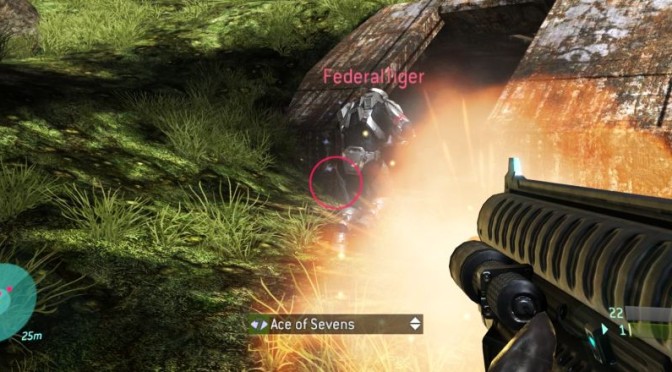
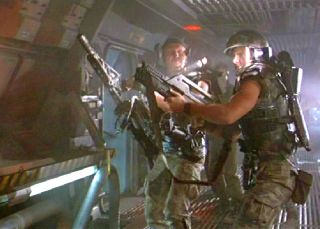 Last week I got a nagging feeling that I needed to catch up on some of the latest games I’d played and enjoyed Grand Theft Auto IV, as well as some other open-world and RPG titles, but occasionally there is a “huge” title that I just plain miss. This fall was a busy time… while I’d played Bioshock and some (but not enough) of Assassin’s Creed and Mass Effect, I’d completely breezed by Halo 3. As a long-time shooter fan/developer I figured I owed it to myself to put in a few hours and catch up with what’s held up as state-of-the-art.
Last week I got a nagging feeling that I needed to catch up on some of the latest games I’d played and enjoyed Grand Theft Auto IV, as well as some other open-world and RPG titles, but occasionally there is a “huge” title that I just plain miss. This fall was a busy time… while I’d played Bioshock and some (but not enough) of Assassin’s Creed and Mass Effect, I’d completely breezed by Halo 3. As a long-time shooter fan/developer I figured I owed it to myself to put in a few hours and catch up with what’s held up as state-of-the-art.